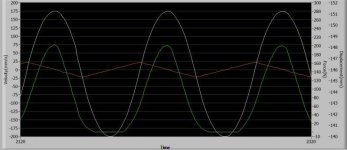Highland Controls
Member
So I have done wave tank applications using Delta Tau and LabVIEW. LabVIEW generates the positions every x distance and then I send the points to the controller to run(interpolating between points). Works very well, but you need a controller that can do that.
If you are talking about sine wave positional moves, the right values for accel, decel, and velocity is all you need. That can be done with a MC_Movexxx function block. I made a calculator that determines those values based on start position, end position, and frequency.
If you are talking about sine wave positional moves, the right values for accel, decel, and velocity is all you need. That can be done with a MC_Movexxx function block. I made a calculator that determines those values based on start position, end position, and frequency.





